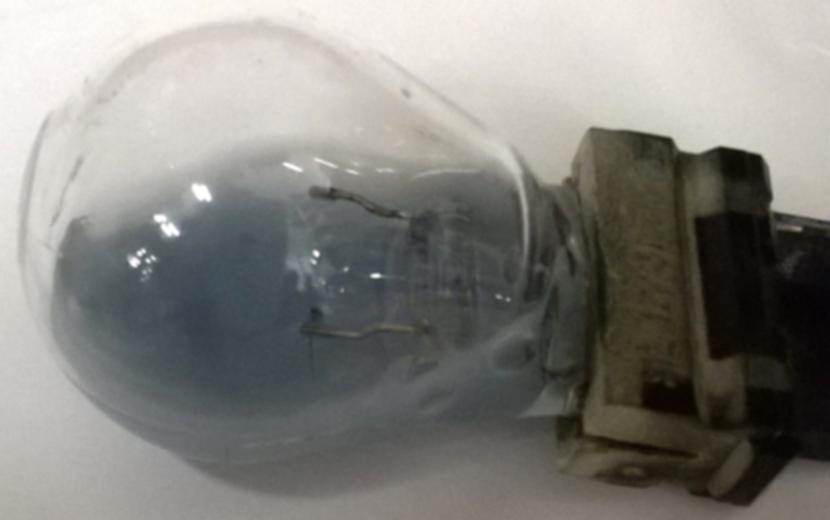Light bulbs are the units which generate the light source within a light housing. Most bulbs are clear (no color on the glass) and the color is changed by having it shine through a colored lens on the vehicle, but some bulbs do come with a thin film of color over them (typically amber for turn signals).
Most light bulbs have codes that determine what they fit and their brightness. For example, a 3157 bulb always has has a flat plug base, two filaments, and can fit anything requiring that number bulb. A 3157A bulb would be the same bulb, but with an amber lens. Other letters mean different things to different manufacturers, such as 3157LL for "long life" and 3157K for a version of the bulb filled with krypton gas. Other common smaller automotive bulb numbers include 168/194/2825 (small base, small bulb), 912/921 (small base, medium bulb), 1156 (single filament, round base), 1157 (dual filament, round base), 3156 (single filament, flat plug base), 7440 (flat glass plug base, single filament), and 7443 (flat glass plug base, dual filament).
LED Versus Incandescent Bulbs
For decades, incandescent bulbs were the only type used in not just vehicles, but almost everything with electrical lighting. Their method of creating light is heating up a high resistance wire until it glows, which means over 90% of the energy used is converted into heat, not light.
LEDs, or Light Emitting Diodes, are a newer, more efficent method of converting electricity into light. However, a diode only allows electricity to flow in one direction (direct current, and it will convert alternating current into direct current) so installing them on vehicles with a poorly marked positive/negative wiring set up can be an excersize in trial and error.
Light Bulb Damage

Light bulbs can be damaged in a number of ways. The photo at the right is a water-damaged light bulb, full of milky-blue liquid which consists of water and the chemical powder originally found in the bulb.
Physical damage may occur to the bulb, breaking the glass causing it to almost instantly burn out the light element.
Simply burning out is the most well-known fate of a light bulb, resulting from excessive heat, oxygen entering the bulb, or simply a long service life.
Automotive Lighting Playlist
- Automotive Lighting
- Headlights
- Fog Lamps
- Tail Lights
